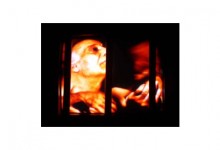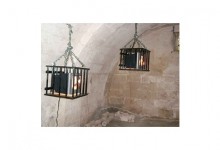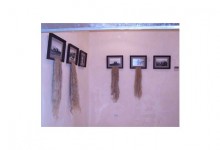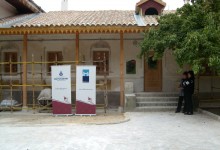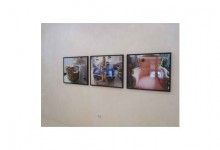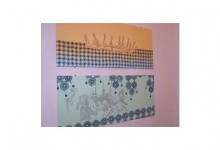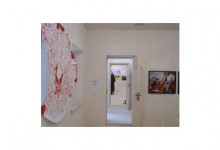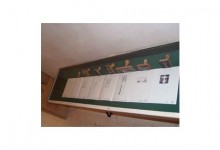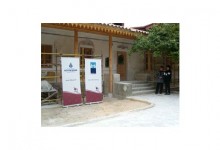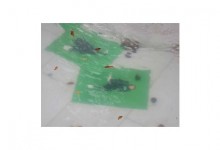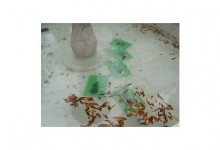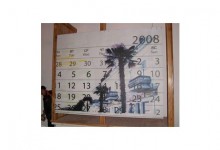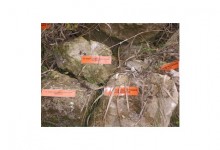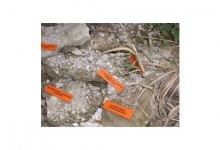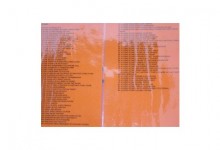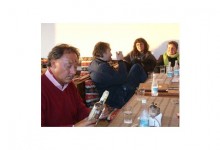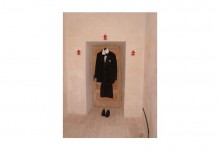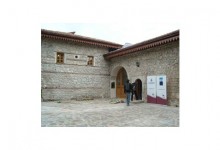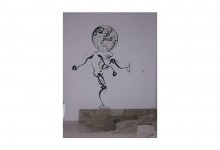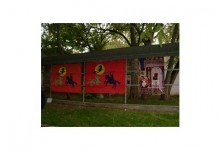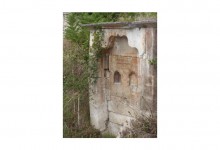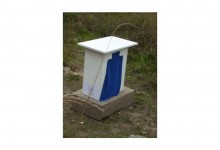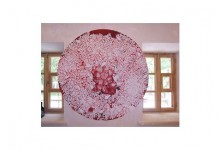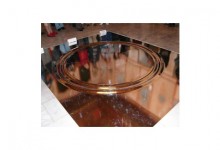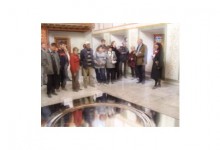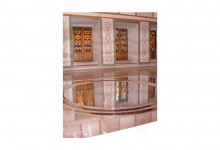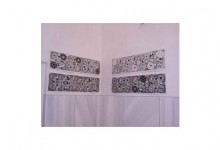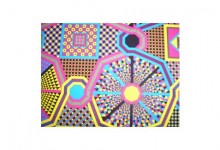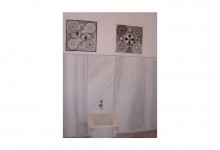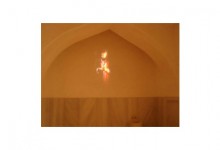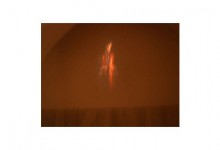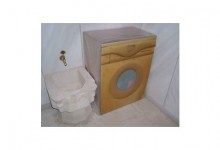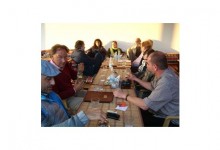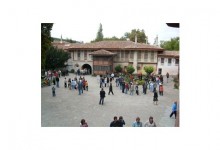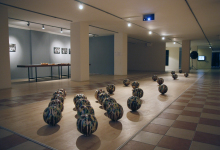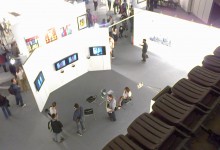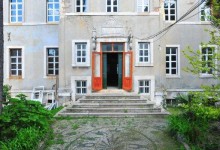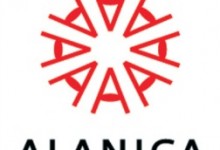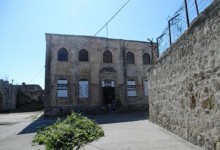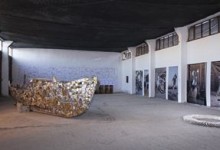- turkish participation
BAHÇESARAY’A TUTULDU / CAPTIVATED BY BAKHCHISARAY/ ZACHAROVANI БАХЧИСАРАЄМ / PLENENNYE BAHCHISARAEM / ΑΙΧΜΑΛΩΤΙΣΜΕΝΟΙ ΣΤΟ ΜΠΑΧΤΣΙΣΑΡΑΪ
Bakhchisaray State Historical and Cultural Preserve
28.09 2008 – 28.10. 2008.
Organizers: Bakhchisaray State Historical and Cultural Reserve / Moscow Museum of Modern Art / The State Museum of Contemporary Art Thessaloniki / Contemporary Art Center BM (Istanbul), Gallery “Collection” (Kiev)
Curators: Maria Tsantsanoglou (Greece), Beral Madra (Turkey), Olga Lopuhova (Russia), Oleg Bayshev (Ukraine)
With the support of PROEKT FABRIKA Centre of creative industries, ISTANBUL METROPOLITAN MUNICIPALITY KULTUR A.Ş., fund for Art Projects
The Crimea has long been a crossroads of diverse cultures, a place where many nations and peoples have come together. It has provided inspiration for artists, writers, poets and musicians since antiquity.
Drawing attention to the unique historical heritage of Bakhchisaray and the cultural diversity of the region, and its interaction with neighbouring countries, the organizers of the present project see art as a universal language capable of bridging gaps both between people and between peoples.
Despite the ambiguity of the current political situation in the Crimea and deep historical differences, it is hoped that this exhibition will find common ground between the national and cultural entities involved and point towards the possibility of harmonious coexistence. Bahchisaray State Museum, the adjacent park, the Turkish cemetery, Sokolinaya Tower and other historical and cultural surroundings will offer spaces for the site-sensitive projects of the participants.
The project will bring together leading artists from Greece, Russia, Ukraine and Turkey, countries which have been closely linked to the Crimea for centuries.
GREECE:
Nikos Alexiou is presenting a work based on patterns and motifs from the floor of San Marco Cathedral in Venice. It is a project that puts the artist in the position of an archeologist who draws what he has found rather than simply making a photograph, in order to understand it better. The artist has worked hard with a similar project in the Iveron Monastery in Mt. Athos where he lived for four months. To some extent Nikos Alexiou is influenced by the work of the Ukrainian monk of the 18th century, Vassily Grigorovich Barsky, who travelled to Mt. Athos and copied patterns he found in the monasteries. Bringing images from San Marco to Bakhchisaray is a gesture of offer and recognition to a highly artistic environment of great historical importance.
Elli Chrysidou, impressed by the Falcon Tower of the Palace, creates a mystical kingdom of birds that leave their traces without showing themselves. The invisible side of birds is the first strong impression that people get when visiting this very unusual tower which housed the Palace falcons. These traces are reinforced with drawings not exactly of the birds themselves but of an indeterminate memory of them through space.
Babis Venetopoulos is a video artist working with the technology of digital images and thus with its obvious possibilities to deconstruct the image through the flexibility of the digits causing stunning transformations. In his work for the Bakhchisaray exhibition, the artist presents his aesthetic view of incarceration and distortion with the image of young turning old and getting transformed into a bird. This is shown in two cages in which a young man and an old man have the movements and the eyes of birds. Above all, he examines the effect of time on human existence.
Richard Whitlock will show STANDING WAVE, a sculpted relief of shiny metal, representing the liquid surface of a pool, which he has made specially for the ‘Divan Hall’ of the Palace. He will also show two pictures of indoor spaces of the Bakhchisaray Museum, composite photographs from which, in the Byzantine tradition, linear perspective has been eliminated.
TURKEY
Murat Morova will exhibit a wall drawing with the Turkish title “HUSTLE AND BUSTLE”. The figure masterfully created with the technique of calligraphy by the artist displays the indecisive movement between being crashed by the weight of the world or giving up to carry it.
Melih Görgün will exhibit his video and sound installation “DEATH IS ON THE OTHER SHORE” that tackles the question “How can an individual submitting or resisting to the confusing ambiguities of the globalisation capture the changes and transform it to a positive energy or to a self-determined position?” This work discreetly creates the ambiguous environment to react to this question.
Nazlı Eda Noyan will exhibit five digital prints with the title “FINELY EMBROIDERED” with a video supplement displaying her grandmother’s embroidery pieces with Intricate, flowery, abstract and beautiful motives that were left unfinished. Her prints show how she completes these pieces with her hand work: detailed, social, abstract and sad.
Sıtkı Kösemen will exhibit portrait photographs of a family. Kösemen’s photographs can be called as hybrid documents, a description that emphasizes the combination of research, journalism, documentation and artistic intervention. His photography series on individuals may depict a cross section of a complex society, but the intentional simplicity of rendering allows them to remain open to multiple interpretations.
UKRAINE:
The Ukrainian Crimea, once the zone of influence of the Greeks, Ottomans and Russians, is now at a dangerous intersection of the new imperial interests and possible new clashes.
Aleksandr Gnilitsky in his work GREAT WASHING creates a symbolic metaphor of a harmonious unity of countries participating in the project, putting in a common space of symbolic attributes of Ukraine, Greece, Turkey and Russia.
The work of Maksim Mamsikov MARINE BATTLE creates the image of a paradise resort in Crimea, but this “paradise” is illusive and any sharp movement can interrupt its existence.
Aleksandr Roitburd dedicated his work to the tragic fate of the artist in the twentieth century, creating two portraits of K. Korovin and F. Shalyapin in explanation of the sculptural group at the entrance of country house of K. Korovin in Gurzuf. Russian painter K. Korovin lived and worked for many years in Gurzuf (1910-1917). In 1910-1912 he built his studio-cottage “Salambo” to his own design. In Soviet times it was used as a rest-home, and since 1947 is has been the Creativity house of the State Art Fund.
Oleg Tistol in his picturesque installation THIRD ROME depicts with irony the imperial ambitions of current residents of the Crimea, who gave this name to the pathetic Gurzuf casino.
RUSSIA
The installation of Nikita Alekseev “A LIVING STONES” deals with the Krymoross monument, the only monument to have come down to us, and in almost perfect condition, which relates to the worship of a mysterious people living on the Crimean peninsula between about 1700 – 1850 AD (XX – XXI centuries of the old era). The inscriptions on the monument have been reconstructed with the Atman-subkvark method of Hukuty – Fandakbashi but although the language and writing of Krymoross have been successfully investigated and decrypted by C. Lu, these inscriptions almost defy interpretation. Among the 101 stones, can be found such inscriptions as: “Living stone, allocating oil and gas”, “Living stone connected to the Internet”, “Living stone, listening to the rose”, etc.
Vadim Zakharov, together with the long-time hero of his works Pastor Zond, will show photographs taken in the Crimea done in a late ‘90s style translating their neutral “private” detention into a profound philosophical reflection on life and our place in it today.
Konstantin Zvezdochetov has long worked with the relocation of historical subjects and the subjects of art history in the aesthetics of cartoons of the Soviet journal “Crocodile”. Created in this style and filled with a mass of new connotations, phantasmagoric paintings with bright ornaments and heroes unimaginable in reality appear in Bahchisaray museum to re-create its fantastic atmosphere – something between the “Thousand and One Nights” and Russian fairy tales by Afanasyev.
Andrey Filippov, in his REFLECTIONS ON TIME “revitalizes” the old fountain of Bahchisaray museum, located near Sokolinaya tower. We will wonder whether the sounds of the water in this audio installation are lamenting the bygone glory of Bahchisaray, or hard times to come.
Special guest of the festival from Germany haralampy Oroshakov will attempt to appropriate the historical Bahchisaray palace complex by impressing the seal of his family earldom on various elements of its decor.
KIRIM BAHÇESARAY’DA RUSYA, YUNANİSTAN, TÜRKİYE VE UKRAYNALI SANATÇILARIN SERGİSİ
Bahçesaray Devlet Tarih ve Kültür Koruma Alanı
28.09 2008 – 28.10. 2008.
Düzenleyiciler : Bahçesaray Devlet Tarih ve Kültür Koruma Alanı; Moskova Modern Sanat Müzesi; Selanik Devlet Çağdaş Sanat Müzesi; BM Çağdaş Sanat Merkezi (Istanbul); Galeri “Collection” (Kiev)
Küratörler: Maria Tsantsanoglou (Greece), Beral Madra (Turkey), Olga Lopuhova (Russia), Oleg Bayshev (Ukraine)
Destekleyenler: PROEKT FABRIKA Yaratıcı Endüstriler Merkezi, ISTANBUL BÜYÜKŞEHİR BELEDİYESİ KÜLTÜR A.Ş.,/ SANAT PROJELERİ FONU
Kırım her dönemde birçok ulus ve toplumun birarada yaşayabildiği farklı kültürler kavşağı ve Antik çağlardan günümüze sanatçılara, şairlere ve müzikçilere esin kaynağı olmuştur.Bu serginin düzenleyicileri sanatın toplumlar ve insanlar arasında bir köprü kurma gücü olduğuna inanarak Bahçesaray’daki bu eşsiz tarihsel mirasa, bölgedeki kültürel çeşitliliğe, komşu ülkelerle karşılıklı ilişkilere dikkatleri çekmek istiyorlar.
Kırımda, şimdilerde sürmekte olan çelişkili siyaset ortamı ve tarihten gelen sorunlara karşın bu serginin, katılımcıların ulusal ve kültürel kimlikleri arasında ortak bir zemin yaratması ve uyumlu bir birlikte varolma olanağı sağlaması umut ediliyor.
Sanatçılar Bahçesaray Müzesi ve parkında, Türk mezarlığı, Sokolina kulesi ve diğer tarihsel ve kültürel çevrede bu mekanlara duyarlı yapıtlar sunacaklar. Bu proje Yunanistan Rusya, Ukrayna ve Türkiye gibi, yüzyıllar boyunca Kırım yarımadasıyla yakın ilişkide olan ülkelerin önde gelen sanatçılarını ilk kez bir çağdaş sanat sergisinde biraraya getiriyor.
YUNANİSTAN
Nikos Alexiou Venedik’te San Marco katedralininn zeminindeki motiflerden esinlenen bir işi sunuyor. Bu sanatçıyı bir arkeolog gibi çalıştıram bir projedir; bulduğunu daha iyi anlamak için fotografını çekmek yerine resmini çizer. Sanatçı benzer bir projeyi Athos dağında Iveron manastırında dört ay yaşayarak gerçekleştirmiştir. Nikos Alexiou bir bakıma Ukrayna’lı keşiş Vassily Grigorovich Barsky’nin işinden etkilenmiştir. Barsky Athos dağına çıkmış ve manastırlarda bulduğu motifleri kopya etmiştir. San marco’dan Bahçesaray’a bu motifleri getirmek bir sunma eylemi ve bu büyük tarihsel öneme sahip sanatsal çevreye saygıdır.
Elli Chrysidou, bu saraydaki Şahin Kulesi’nden etkilendi ve kendilerini göstermeden iz bırakan gizemli bir kuş kırallığı yaratıyor.. Bu kulede bir zamanlar sarayın şahinleri barınıyordu; sanatçı bu kuşları göstermeden onların izlerini anımsatan desenleri sunuyor.
Babis Venetopoulos bir video sanatçısıdır. Dijital teknolojinin olanaklarıyla imgeleri şaşırtıcı biçimlerde değiştirmektedir. Bahçesaray sergisinde bir gencin yaşlanmasını ve bir kuşa dönüşmesini gösteriyor ve zamanın insan üstündeki etkisini inceliyor.
Richard Whitlock DİKİNE DURAN DALGA başlıklı parlak-metal heykel kabartmayı sarayın Divan Salonu’ndaki havuz için gerçekleştirdi. Sanatçı ayrıca Bahçesaray Müzesi’nin iki odasını Bizans geleneğinde olduğu gibi çizgisel derinliği yok edilmiş bir fotograf kompozisyonunda gösterecek.
TÜRKİYE
Murat Morova TAHAMMÜL MÜLK-Ü adlı yapıtında kaligrafi ve deseni birleştirerek, dünyanın ağır yükü altında ezilemeden, bu yükü kaldırmaya çalışan bir insanı betimlemektedir.
Melih Görgün’ün ÖLÜM KARŞI KIYIDA başlıklı ses ve video yerleştirmesi, bireyler küreselliğin ikilemlerine nasıl katlanıyor ya da direniyor ve bunu pozitif enerji ya da kararlı bir duruşa döndürüyor, sorusunun yanıtını arıyor. Bu video izleyicide bu soruya tepki verme ortamı yaratıyor.
Sıtkı Kösemen bir ailenin fotograflarını sunuyor. Kösemen melez imgeler üstüne çalışan bir sanatçı; onun fotograf dizileri karmaşık toplum yapıları içinde bireylerin konum ve duruşlarını betimliyor. Fotograflardaki kasıtlı sadelik, onların çoklu yorumlara açık olmasını sağlıyor.
UKRAYNA
Aleksandr Gnilitsky’nin işi BÜYÜK YIKAMA sergiye katılan ülkelerin bilinen simgelerini ortak bir mekana yerleştirerek uyumlu bir birleşmeyi hedefleyen simgesel bir eğretileme sunuyor.
Maksim Mamsikov’un DENİZ SAVAŞI Kırım’daki cennet tatil köylerini öykünüyor; ancak bu cennet çok yanıltıcıdır ve sert bir hareket bu cennetin varlığını sonlandırır.
Aleksandr Roitburd işini 20.yy sanatçılarını trajikkaderine adıyor ve Gurzuf’da K. Korovin’in kır evinin kapısındaki heykel grubunu açıklamak üzere K. Korovin and F. Shalyapin’in portrelerini yapıyor. Rus ressam K. Korovin uzun yıllar Gurzuf’da yaşadı (1910-1917). 1910-1912’de “salambo” adını verdiği atölyesini tasarımladı ve yaptı. Sovyet döneminde bu yapı bir dinlenme evi olarak kullanıldı. 1947’de burası Devlet yaratıcılık Fonu merkezidir.
Oleg Tistol ÜÇÜNCÜ ROMA başlıklı resimsel bir yerleştirme sunmaktadır; bu, bu adı Gurzuf kumarhanesine bu adı veren Kırım’ın bugünkü sakinlerinin yüksek ihtiraslarını hicveder.
RUSYA
Nikita Alekseev’in YAŞAYAN TAŞLAR adlı yerleştirmesi Krymoross anıtını irdeliyor; bu anıt Krırım yarımadasında 1700-1850 arasında yaşamış gizemli bir toplumun tapınmasına ait zamanımza kadar kalmış tek anıttır. Bu anıttaki yazıtlar Hukuty – Fandakbashi’nin Atman-subkvark metoduyla onarılmıştır, ancak bu Krymoross dili ve yazıtları C. Lu tarafından başarıyla incelendi ve çözüldüyse de, bu yazıtlar yorumlanmayı rededer. 101 taş arasında şu yazıtlar da vardır: “Yaşayan taş, yağ ve gaza ilintilidir”, “yaşayan taş internete bağlıdır”, “Yaşayan taş, gülü dinler” v.b.
Vadim Zakharov, yapıtlarında uzun süredir görünen kahraman papaz Zond ile 90’larda Kırım’da çekilmiş fotografları gösteriyor. Bu fotograflardaki yansız ve özel tutukluk yaşam ve bizim bu yaşam içindeki yerimize ait derin bir felsefeye dönüşüyor.
Konstantin Zvezdochetov uzun süredir tarihsel ve sanat tarihi konularını Sovyet dergisi “Krokodil”in resimli romanlarının estetiğiyle işliyor. Parlak renkli motifler ve düş kahramanlarıyla bu uslupta yaratılmış ve yeni anlamlar yüklenmiş fantazmagorik resimler Bahçesaray müzesinde Binbir gece Masallarını ve Afanasyev’in Rus masallarını canlandıracak.
Andrey Filippov, ZAMAN ÜSTÜNE DÜŞÜNCELER adlı yapıtıyla Sokolina kulesi yankınındaki eski Bahçesarau Müzesi çeşmesini yeniden akıtmaya çalışacak. Bu ses yerleştirmesindeki seslerin bu çeşmenin Bahçesaray’ın geçmişteki görkemini mi yoksa gelecekteki zor günlerimi çağrıştırdığını anlayacağız.
Bu etkinliğin Almanya’dan özel konuğu Kharlampy Oroshakov soylu ailesinin mühürünü sarayın dekorundaki çeşitli ögelerle özdeşletirecek
*************************************************************************
NOTES ON “CAPTIVATED BY BAKHCHESARAY” EXHIBITION
It is always difficult to sum up the developments in art scenes and come up with a definite panaroma. The most definite observation is that the content and form of art and art making has changed since the beginning of the 90’s. The change is very much related to the socio-political and ideological alterations (alterations and not transformations because of the recurring instances of the one-time political ideologies). While the gradual evaporation of the most solid factor, namely the nation state ideology is being replaced by a pious national ideology, in tune with the neo-liberal freedom and permissiveness, the micro-level socio-political issues float up. Thus the alteration reflected itself as completely free and unrestricted declarations of macro or micro-level individual statements through art works. As the art works of today are far from being hermetic and metaphorical, one can say that art making is serving as a tool of neo-anarchist attitude and proclamation. The dissident individual utilizes art making in order to have a visible presence within the socio-political panorama of his/her territory. However, this panorama which is on one side almost occupied by the politicians and bureaucrats and on the other side by the business people who in general are not so interested in contemporary art production opens for the artist a new arena of struggle. In the underdeveloped local art markets of the region, the artists are exposed to make extra efforts for their economic welfare. In most of the countries aroundTurkeythe economies are in difficulties and the infrastructures of culture industries are absent or inadequate.
Even if the block-buster exhibitions are full of photography and video works, painting is still the most demanded artwork in the local art market, and artists are keen to show their painting skills, because painting- or the hand made art work- is a sign for the public whether the artist is professional or not. Today’s young generation is reflecting its ideas, concepts, interpretations, criticism mainly through painting, photography and video, but also through artistic and cultural events which they organize particularly without a curating hand in it.
Throughout the 90’s the urgency of the artist was “identity” in political, ethnic, gender-oriented locations with references to their origins or traditions. Since 2000, while a group of artists of Turkey are running after more global pursuits, producing works for international curators and audiences by following the concept and strategy trends, another group is still dealing with the local issues and problems. Sometimes, the artworks look like newspaper headlines with picture or like propaganda posters that deal with daily local politics.
Photography with all its possibilities of true or false representations, with its illusive appearances or with its possibilities of monumentality is being utilized by almost all artists. Documentary photography is the basis of socio-political artworks as well. Yet, the ambiguous issue in photography works is the relation of the image to the conceptual framework of the artist’s manifestation, or the already worldwide consumed criteria that are repetitively being employed for the impact of the photographic image. Convincing and persuasive photography work comes with its theoretical and philosophical background which can only be mapped out in the expanded oeuvre of the artist.
Regional exhibitions, or exhibitions that unite artists from neighboring countries that have past and present political and cultural relations are no doubt a fertile soil for new productions and events. As together with Magda Guruli I was making the first comprehensive show of Georgian artist in Istanbul, during the 10th Istanbul Biennale, I indicated that we have to admit the weakness and lack of communication and knowledge in the relationship between the culture and art worlds of Turkey and those of the Soviet world during the Cold War period and that presently we (mostly curators and museum directors) are making a special effort to fill the vacuum created by the apathy between 1950-1990 via cultural and artistic activities.
In the 90’s, when the discovery of the other was the fundamental quest, West European curators and museum directors have united the artists of East Europe, Balkans, Greece and Turkey in eclectic group shows. Looking back to those exhibitions, there is no doubt that they have motivated the artists to democratic openness and the local art scenes to acknowledge international criteria. The encounter of the artists of the onetime polarized cultures created a new synergy in transforming the theoretical, philosophical and conceptual fundaments of contemporary art. The macro-events have prepared the field for in depth encounters or i.e. the empty parts of the macro-picture can only be embroidered meticulously through a more profound collaboration, which I believe Bahcesaray exhibition will be an interesting model.
Beral Madra, March 2008
Aleksandr Pushkin
To the Fountain Of the Palace Of the Bakchisarai

